Date palms (Phoenix dactylifera) have been treasured for thousands of years, particularly in arid and desert regions of the world. Their ability to thrive in hot, dry climates while producing rich, sweet fruits makes them a staple of Middle Eastern, North African, and Southwestern U.S. landscapes. Whether you’re looking to cultivate these iconic trees for their delicious dates or simply for their ornamental value, growing date palms in a desert environment is a rewarding, achievable endeavor.
In this detailed guide, we’ll cover everything you need to know — from choosing the right variety and planting to ongoing care and harvesting. If you’ve ever dreamed of having your own oasis of towering date palms, let’s get started.
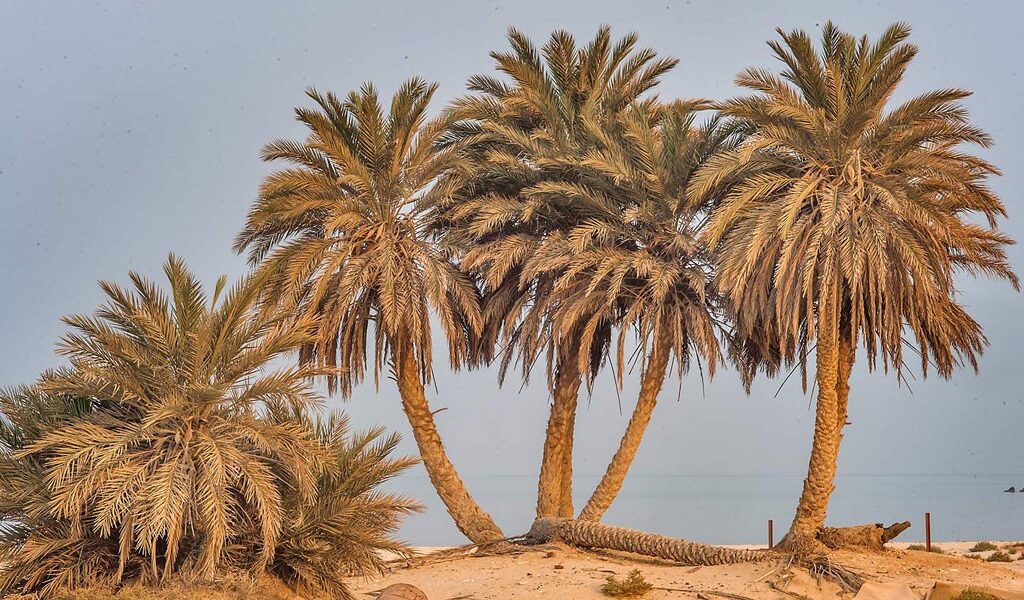
Why Date Palms Thrive in Desert Climates
Date palms are naturally suited for desert conditions because of their:
- High heat tolerance (surviving up to 120°F or more)
- Deep, drought-resistant root systems
- Ability to handle low humidity
- Preference for sandy, well-drained soils
Unlike many fruit trees, date palms rely on extreme temperatures to trigger flowering and fruit ripening, making deserts an ideal environment for their cultivation.
Best Date Palm Varieties for Desert Growing
While there are over 1,500 date varieties worldwide, a few stand out for their quality and suitability for desert regions:
‘Medjool’
- The most popular commercial variety
- Large, soft, sweet fruit with caramel notes
- Tolerates extreme desert heat well
‘Deglet Noor’
- Known as the “queen of dates”
- Medium-sized, semi-dry dates with a honey-like flavor
- Widely grown in California and Arizona
‘Barhi’
- Small, soft, honey-sweet fruits
- Consumed fresh (at khalal stage) or dried
- Early maturing and heat-loving
‘Zahidi’
- Medium-sized, golden-brown fruits
- Firmer texture, slightly nutty flavor
- Excellent for long-term storage
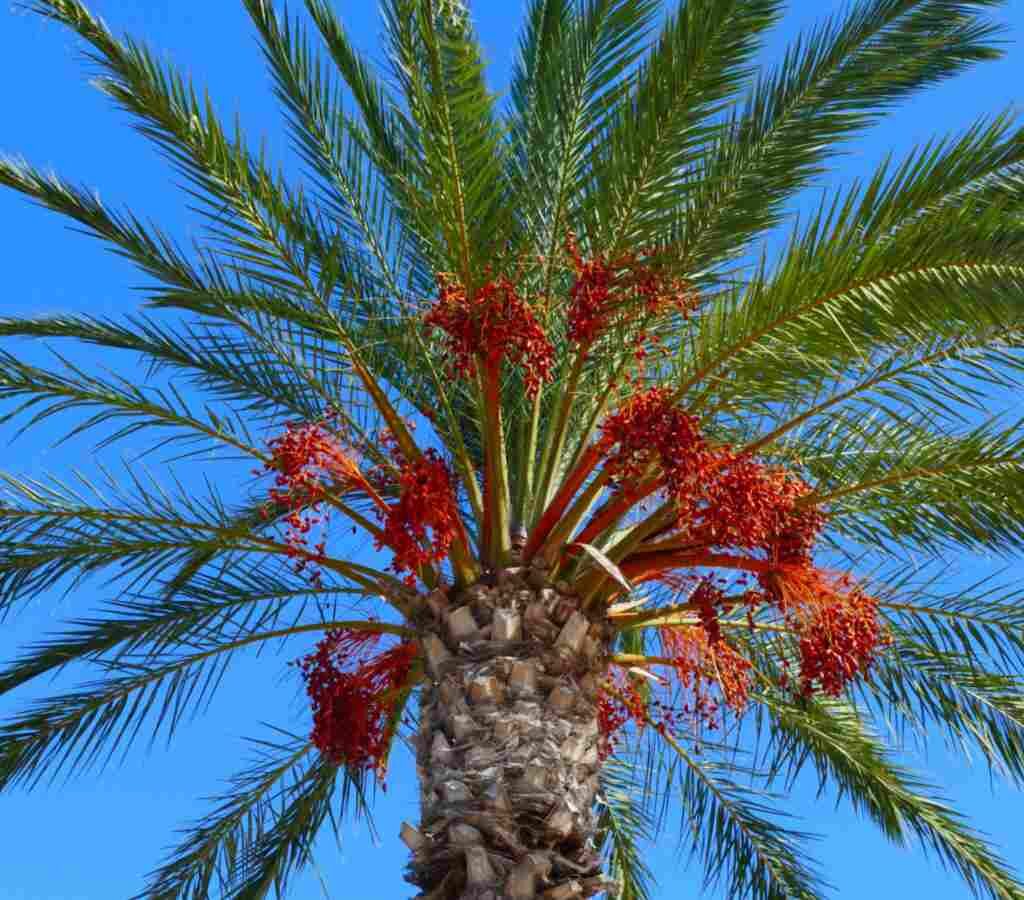
How to Plant Date Palms in Desert Climates
1. Choose a Suitable Location
Date palms need full sun exposure for at least 8-10 hours a day. Select an open, unobstructed area away from buildings or tall trees that could shade them.
Important considerations:
- Soil must be well-drained and sandy.
- Avoid planting in low-lying spots where water might collect.
2. Prepare the Soil
Though date palms are tolerant of poor soils, they grow best in sandy, loamy soils with a neutral to slightly alkaline pH (7.0-8.5).
Soil preparation tips:
- Dig a wide, deep hole (about 3 feet wide by 3 feet deep).
- Mix the native soil with coarse sand and aged compost or well-rotted manure to improve drainage and fertility.
- Avoid heavy clay soils unless thoroughly amended.
3. Planting Process
- Carefully remove the sapling from its container.
- Place it in the hole, ensuring the root ball’s top sits level with the ground surface.
- Backfill with the soil mixture.
- Firm the soil around the base.
- Water deeply immediately after planting.
If planting multiple date palms, space them 20-30 feet apart to allow for mature canopy growth.
Watering Date Palms in Desert Conditions
Although drought-tolerant once established, young date palms require regular watering, especially during their first 2-3 years.
Watering guidelines:
- First year: Water every 2-3 days in summer and once a week in cooler months.
- Established trees (after 3 years): Deeply water once a week during hot seasons and every 2-3 weeks in winter.
Pro Tip: Use deep watering techniques like basins or drip irrigation to encourage roots to grow downward, making the palm more drought-resistant.
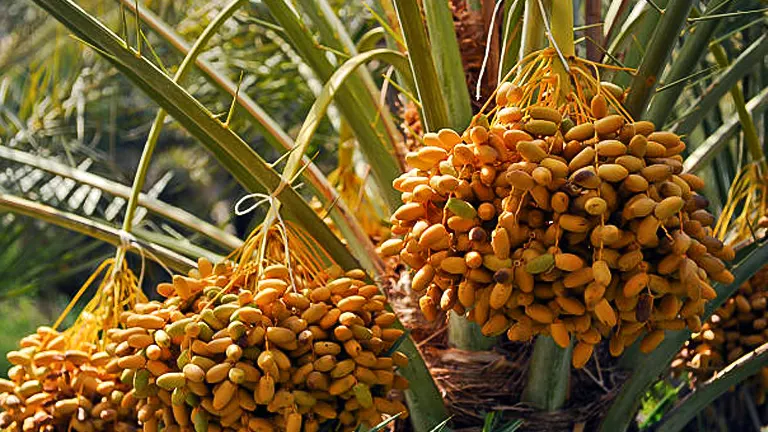
Fertilizing Date Palms
To promote healthy growth and good fruit production, feed your date palms regularly.
Fertilizer recommendations:
- Use a balanced fertilizer (8-8-8 or 10-10-10) with added magnesium and trace elements.
- Apply fertilizer three times a year: early spring, midsummer, and early fall.
- Supplement with organic compost or aged manure around the root zone for improved soil structure and slow-release nutrients.
Pruning and Maintenance
Date palms naturally shed their old fronds, but routine maintenance keeps them neat and productive.
Pruning tips:
- Remove dead, dry, or drooping fronds annually.
- Avoid excessive pruning, as fronds help shade the trunk and reduce sunscald.
- Wear gloves and use a pruning saw — frond bases are sharp.
Pest management:
- Common pests include palm weevils, scale insects, and red spider mites.
- Control with horticultural oils or insecticidal soaps if infestations appear.
Pollination and Fruit Production
Most date palm varieties are dioecious, meaning male and female flowers grow on separate trees. In commercial orchards and home gardens, this means you need at least one male palm for every 20-25 female palms for fruit production.
Pollination options:
- Natural wind pollination (less reliable in isolated gardens)
- Hand pollination, where pollen is collected from male flowers and manually brushed or shaken onto female flowers.
Hand pollination significantly increases fruit set and is commonly practiced in modern date farming.
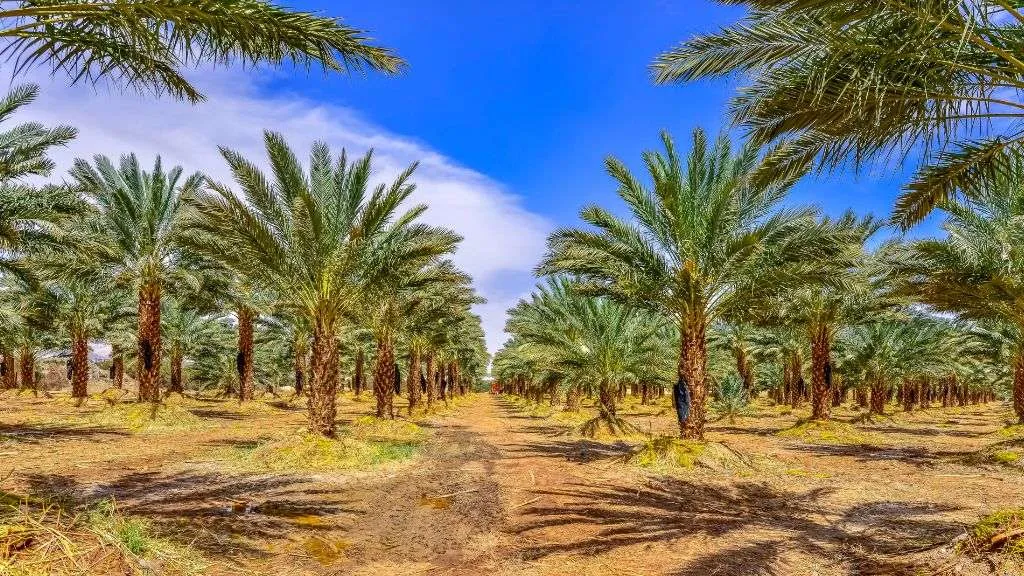
Harvesting Dates
Date palms typically take 4-8 years to begin fruiting and can live and produce fruit for over 80-100 years.
Date ripening stages:
- Kimri (Unripe, green)
- Khalal (Crunchy, yellow or red)
- Rutab (Soft, ripe, brown)
- Tamar (Fully dried, wrinkled)
Harvesting tips:
- Harvest dates at the Rutab or Tamar stage depending on your preference.
- Use a tall ladder and safety harness for mature palms.
- Handpick or use date harvesting poles.
After harvesting, dates can be:
- Eaten fresh
- Sun-dried for preservation
- Stored in airtight containers
Winter Care for Date Palms in the Desert
Desert regions can experience occasional frost in winter. While mature date palms tolerate mild cold, young palms are vulnerable.
Cold protection strategies:
- Wrap the trunk and crown in burlap or frost cloth if temperatures drop below 28°F (-2°C).
- Water the palm deeply before cold nights — moist soil retains more heat.
- Use windbreaks or plant near sun-heated walls in marginal areas.
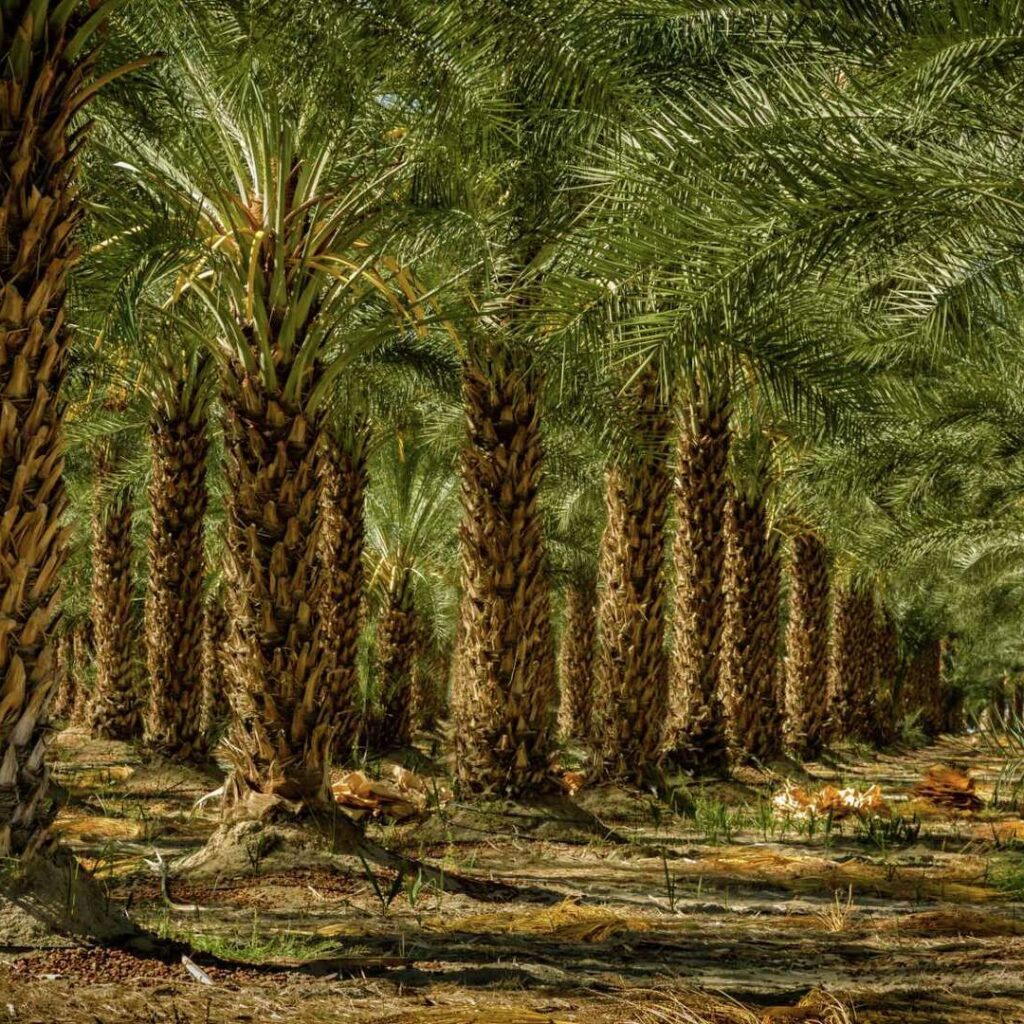
Common Issues and Solutions
1. Yellowing Leaves:
Often a sign of nutrient deficiency, especially nitrogen or magnesium. Fertilize with a balanced fertilizer and supplement with Epsom salt for magnesium.
2. Root Rot:
Caused by overwatering or poor drainage. Always plant in well-drained soil and avoid waterlogging.
3. Pest Damage:
Inspect regularly for palm weevils or scale. Apply horticultural oil or neem-based products when necessary.
Final Thoughts
Date palms are symbols of life, resilience, and sustenance in desert regions worldwide. With the right care, they not only enhance your landscape with their towering, graceful appearance but also reward you with bountiful, nutrient-rich fruits.
Whether you’re a backyard gardener in Arizona, New Mexico, or Nevada, or managing a desert farm, following these growing practices will help you cultivate healthy, productive date palms for years to come.
Ready to turn your desert property into a lush, fruitful oasis? Start planting your date palms today and savor the harvests for generations!

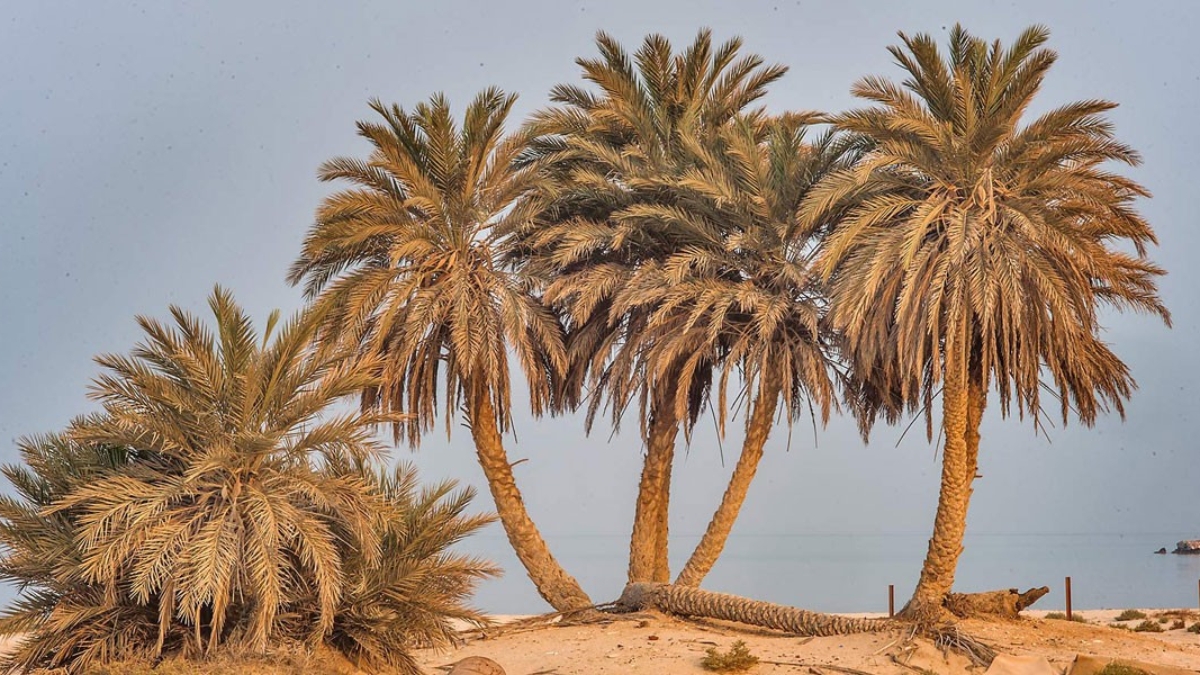



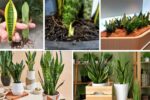
Leave A Comment